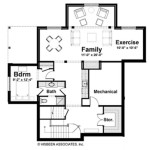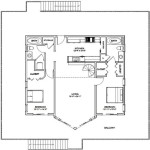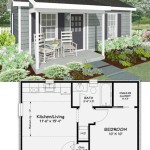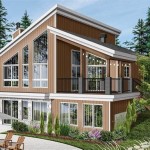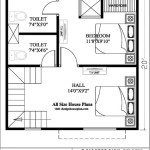Slanted roof house plans are a popular choice among homeowners who want to add a modern, stylish twist to their home. With the rising popularity of slanted roofs, it’s no wonder that more and more homeowners are choosing to incorporate them into their home’s design. In this article, we’ll explore the different types of slanted roof house plans, the benefits of having one, and the considerations you should make before choosing one.
Types of Slanted Roof House Plans
There are several different types of slanted roof house plans. The most common type is a gabled roof, which is characterized by two slopes that meet in the middle and form a triangle. This type of roof is ideal for homes with two stories, as the slanted roof can be used to create a dramatic effect. Other types of slanted roof house plans include hip roofs, which have four slopes that meet in the middle, and shed roofs, which have one slanted side and one flat side. Each type of slanted roof has its own advantages and disadvantages, so it’s important to consider which one will best suit your home and lifestyle.
Benefits of Slanted Roof House Plans
Slanted roofs offer a number of benefits to homeowners. One of the most obvious benefits is increased space. Slanted roofs can be used to create additional space in the attic or upper floors of a house. This can be especially useful if you plan on utilizing the space for storage, a home office, or an additional bedroom. In addition, slanted roofs are more efficient in terms of energy consumption, as they can help keep your home cool in the summer and warm in the winter. Finally, slanted roofs add a unique, stylish element to any home, helping to make it stand out from the rest.
Considerations When Choosing Slanted Roof House Plans
Before selecting a slanted roof house plan, there are a few things you should consider. First, you should think about the size, shape, and style of the roof. This will help you determine which type of roof will best suit your home and lifestyle. Additionally, you should consider the climate of the area in which you live. Different types of slanted roofs may be more suitable for different climates, so it’s important to choose one that will be able to withstand the elements. Finally, you should consider the cost of the roof, as well as the materials you will need to construct it. Slanted roof house plans offer a unique, modern twist to any home. With the right design, they can add style and space to your home, while also making it more energy efficient. When selecting a slanted roof house plan, it’s important to consider the size, shape, and style of the roof, as well as the climate of the area in which you live. Additionally, you should take cost into account when making your decision. By taking all of these factors into consideration, you can be sure to choose a slanted roof house plan that will best suit your needs and lifestyle.














Related Posts


